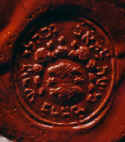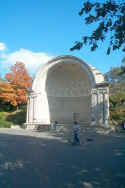HarburgProject -
Genealogische Seiten
(Kontakt: Rolf Hofmann, Libanonstrasse 79,
70186 Stuttgart; E-Mail)
Übersicht über die genealogischen Seiten von
HarburgProject, die über pdf-Dateien abrufbar sind (dazu Informationen in
Englisch):
a)
Stammbaum der Familie Katzenellenbogen (pdf-Datei) Katzenellenbogen Chart
Comment)
b) Informationen zum Stammbaum der
Familie Naumburg (pdf-Datei) Naumburg Chart Comment
c) Informationen zum Stammbaum der
Familie Weisskopf (pdf-Datei) Weisskopf Chart Comment
d) Informationen zum Stammbaum der
Familie "Salamander-"Levi in Stuttgart/Kornwestheim Extract of ancestral display by Rolf Hofmann with help of descendants of the Levi family
e) Informationen zum Stammbaum der
Familie Nebel in Harburg (letzte der alten jüdischen Familie am Ort) (pdf-Datei) Nebel Chart
f)
Informationen zum Stammbaum der Familie Weil aus Aufhausen - Weil Family of
Aufhausen (Extract of ancestral chart)
mit dem Beitrag über Dr. Emanuel Weil und die Villa Weissenburg
g) Genealogische Seiten zu den
jüdischen Familien Nördlingens - Jewish Family
Sheets Noerdlingen (Sonderseite)
h) Genealogische Seiten zu den Familien Baruch Benedikt (Kriegshaber und
Stuttgart) und Julius Benedikt (Stuttgart + Neapel + London)
i)
Genealogische Seiten zu jüdischen Kunsthändlerfamilien in München und
deren Vorfahren aus der Familie Model in verschiedenen Orten (Munich art
traders and their Model family ancestors)
a) Informationen zum Stammbaum der Familie
Katzenellenbogen (pdf-Datei)
Katzenellenbogen Chart Comment) zur
pdf-Datei hier anklicken - click here
 Rabbi
Jakob Pinchas Katzenellenbogen and his son Pinchas Jakob managed the Oettingen
Rabbinate over a period of ninety years. For hundreds of years the Rabbinates in
Oettingen and Wallerstein had served the religious needs of the jewish
communities in the County of Oettingen, ruled by its Counts and Princes. Both
Rabbinates even kept their importance through the 19th century, only
suffering from a decline of jewish
population when younger families moved to the big cities or emigrated to North
America. So the death of Pinchas Jakob Katzenellenbogen also marked the end of
the Oettingen Rabbinate, as it became part of the Wallerstein Rabbinate for a
few years, until both Rabbinates were taken over by the Rabbinate in
Ichenhausen.
Rabbi
Jakob Pinchas Katzenellenbogen and his son Pinchas Jakob managed the Oettingen
Rabbinate over a period of ninety years. For hundreds of years the Rabbinates in
Oettingen and Wallerstein had served the religious needs of the jewish
communities in the County of Oettingen, ruled by its Counts and Princes. Both
Rabbinates even kept their importance through the 19th century, only
suffering from a decline of jewish
population when younger families moved to the big cities or emigrated to North
America. So the death of Pinchas Jakob Katzenellenbogen also marked the end of
the Oettingen Rabbinate, as it became part of the Wallerstein Rabbinate for a
few years, until both Rabbinates were taken over by the Rabbinate in
Ichenhausen.
Another
person of high interest in the Katzenellenbogen Chart is Lazare Isidor. He was
Chief Rabbi of France and was buried at Pere Lachaise Cemetery in Paris. His
impressing grave monument was donated by the Jewry of France. The grave is hard
to find, but it's pretty close to the one of famous 19th century
actress Rachel Felix, and most people know where her grave is.
b) Informationen zum Stammbaum
der Familie Naumburg (pdf-Datei)
Naumburg Chart Comment zur
pdf-Datei hier anklicken - click here
 Samuel Naumburg
(hazzan
in Paris) was one of the important composers of Reform Judaism during the 19th century and has been often compared with Lewandowski in Berlin and Sulzer in
Vienna. He was born in Dennenlohe (Franconia), where his father was one of the
jewish musicians, who were famous for offering top quality at cheap price.
Samuel Naumburg's grave at Montmartre Cemetery in Paris has vanished. Another
member of the Naumburg family was likewise engaged in musical activities.
Samuel's cousin Elkan Naumburg became a banker in New York and supported musical
activities there. The bandshell at Central Park (foto) was donated by him and has been
used since then for various cultural activities.
Samuel Naumburg
(hazzan
in Paris) was one of the important composers of Reform Judaism during the 19th century and has been often compared with Lewandowski in Berlin and Sulzer in
Vienna. He was born in Dennenlohe (Franconia), where his father was one of the
jewish musicians, who were famous for offering top quality at cheap price.
Samuel Naumburg's grave at Montmartre Cemetery in Paris has vanished. Another
member of the Naumburg family was likewise engaged in musical activities.
Samuel's cousin Elkan Naumburg became a banker in New York and supported musical
activities there. The bandshell at Central Park (foto) was donated by him and has been
used since then for various cultural activities.
Click here for more about
" The Jewish Musicians of Dennenlohe" (by Rolf Hofmann)
c) Informationen zum Stammbaum
der Familie Weisskopf (pdf-Datei)
Weisskopf Chart Comment zur
pdf-Datei hier anklicken - click here
David
Weisskopf and his son-in-law Marx Michael Kohn were the last Rabbis of the
Wallerstein Rabbinate in Northern Swabia. They developed once again flourishing
activities and even took over the Oettingen Rabbinate when it became vacant
around 1857. But as the rural jewish popoulation declined, the jewish
communities in this part of Bavaria were taken over by the Ichenhausen Rabbinate
after Marx Michael Kohn had died in 1888. In the meantime David Weisskopf''s son
had become a Rabbi for a small orthodox community in Paris and stayed in this
position until he died at high age of one hundred years. His grave at Montmartre
Cemetery is very modest and contains further members of the family, the
headstone inscriptions are nearly illegible. Another interesting aspect of the
Weisskopf Chart is the the fact that Rabbi David Weisskopf's aunt was Rabbi
Moses Wassermann's mother. So these two important Rabbis of Southern Germany
were in fact cousins.
d) Informationen zum
Stammbaum der Familie "Salamander"-Levi in
Stuttgart/Kornwestheim
Extract of ancestral display by Rolf Hofmann with help of descendants of the
Levi family
zur
pdf-Datei hier anklicken - click here
The Salamander Story began in 1891, when the jewish leather
merchant Max Levi of Stuttgart founded a Shoe Manufactoring Company in
Kornwestheim (near Stuttgart in Southern Germany), together with the christian
master shoe maker Jakob Sigle. In 1903 they started a joint venture with the
shoe dealer Rudolf Moos in Berlin, who was in search of producers of excellent
and cheap shoes in large quantities. This was the start of the Salamander Shoe
Manufactoring Company. Within twenty years it became the biggest shoe company in
Germany, exclusively selling shoes in its own shops all over Germany. All of Max
Levi's brothers (except Morris) and his Rothschild brother-in-laws participated
in this shoe and leather business. When Max Levi died in 1925 he had just
finished building his new family home, which in fact looked more like a castle.
He also had financial problems, as he had acquired other shoe factories, and
things had run out of control. His brother Sem Levi took care of the Salamander
business in Berlin, his brother Siegfried Levi went on with the main business
together with Arthur Levi and members of the Rothschild and Sigle family.
Besides that Siegfried Levi had an amazing hobby: he had bought Stettenfels
Castle near Heilbronn and was breeding horses for the Hoppegarten Race Track in
Berlin. When Adolf Hitler came to power only Siegfried Levi and his brother
Arthur were still alive. Under pressure of Nazi authorities they had to sell
their Salamander shares and other personal properties and finally managed to
escape to the USA and South Africa. Max Levi's widow emigrated to Switzerland.
The Salamander Company was further successfull after World War II, but during
the following decades a decline of profits occurred due to increasing wages. Labour in Eastern
Europe and Asia became much cheaper and Salamander had to close factories in
Germany. Around the year 2000 there was not much left of once glorious shoe
enterprise. The Villa of Max Levi in Stuttgart survived under the city's
ownership and still reminds of the ups and downs of a Shoe Empire that once was
unique in Germany. The Salamander brand is still well known in Germany, but only
very few people really know of the jewish aspect of this amazing story.